Christmas wreath ideas: 12 stylish looks for a festive front door
Decorate your door with the latest Christmas wreath ideas and create a stunning festive welcome
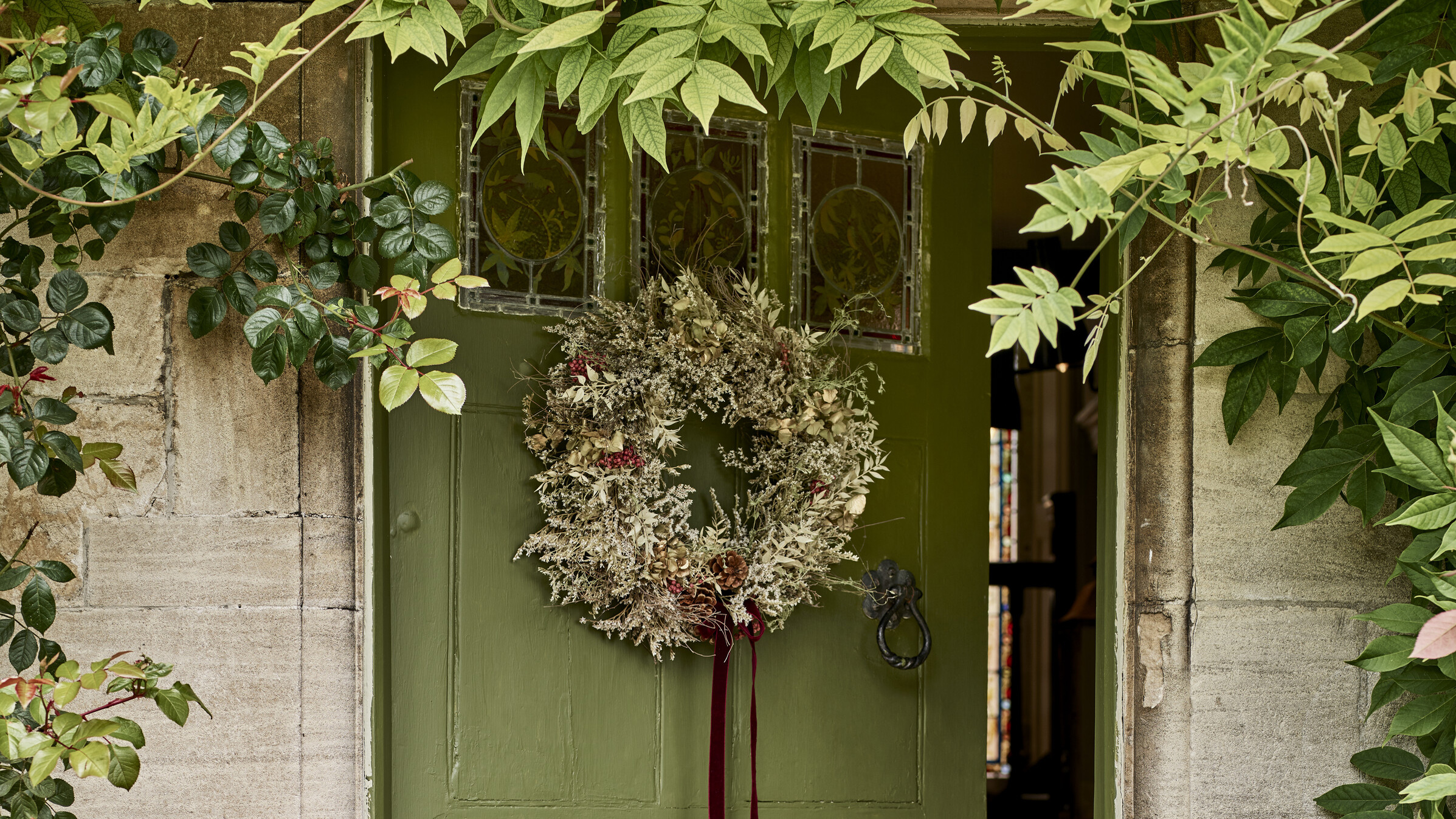
Looking for original Christmas wreath ideas to add a stylish touch to your front door for the festive season? Not only will a beautiful wreath welcome your friends and family to your home, but it will brighten up your door and bring a guaranteed smile to your face whenever you come home.
Whether you love the idea of a low-maintenance faux design, want to try the latest trend for dried flowers, or prefer to add some sparkle with lighting, there are plenty of ways to give your front door a stunning finishing touch.
'Part of the joy of making a wreath lies in creating something that represents you and your family,' says Teresa Conway, Gardeningetc's deputy editor. 'Have fun with foraged berries, leaves and pine cones for a wreath brimming with charm.'
If you've already been searching for the perfect types of Christmas tree for your decor, you might want to consider choosing a wreath design that will complement your tree too. And don't forget that if you need to trim your real tree into shape, the foliage you remove is perfect for adding to your Christmas door wreath to give it a more natural look.
Create a festive welcome with our magical Christmas wreath ideas
The best Christmas wreath ideas will set the style and tone for your home during the festive season, so it's worth taking the time to find the right look for your Christmas porch decor. Whether you're a fan of modern or traditional, there's plenty to choose from in these top looks.
1. Use your favorite garden foliage
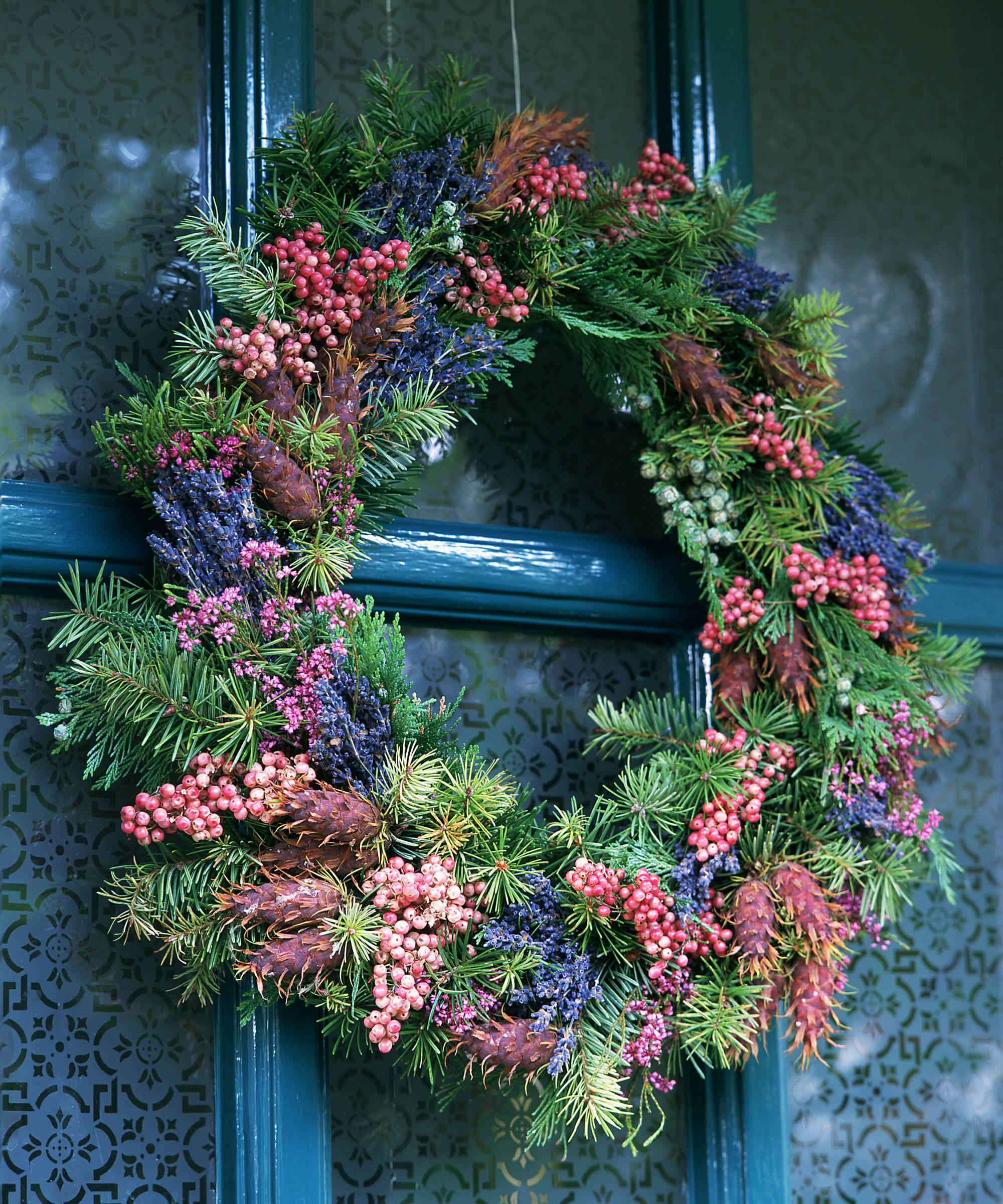
Learning how to make a Christmas wreath using foliage is a wonderful way to get creative for the festive season.
This is the perfect opportunity to make use of the plants and trees in your own plot, picking winter flowering varieties so you can add interesting color and texture to your design.
With its pink rowan berries and sprigs of lavender, this pretty wreath shows that opting for an alternative color combination can be just as effective as a classic red and green scheme.
2. Go for a contemporary style
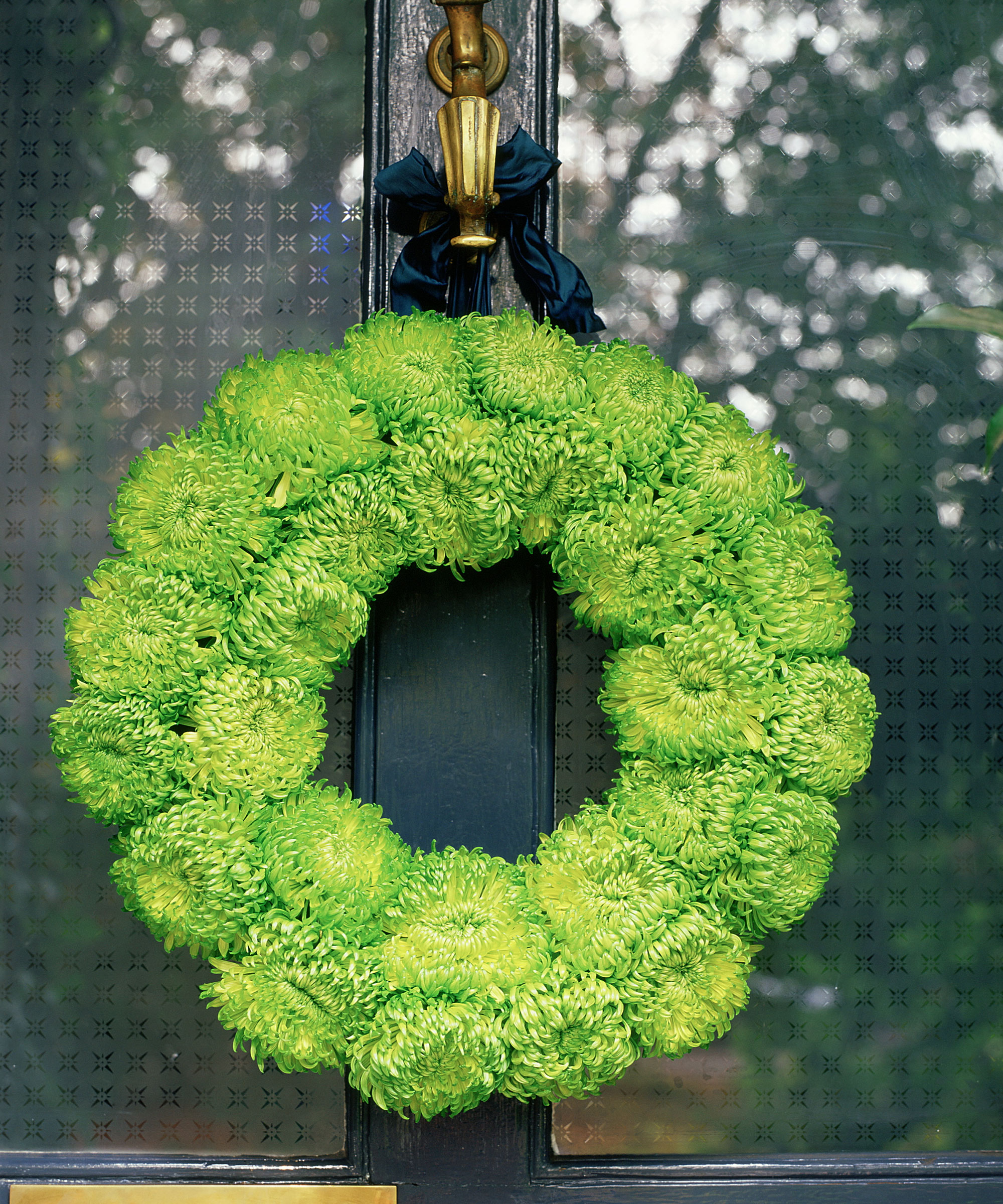
If you favor a more contemporary look for your outdoor Christmas decor ideas, this is a stunning option for your front door.
The zingy lime color of the shamrock chrysanthemums packs a punch and will really stand out against dark painted front doors. A simple design like this would also work well as a centerpiece for your festive table decorations.
3. Create a rustic look with pine cones
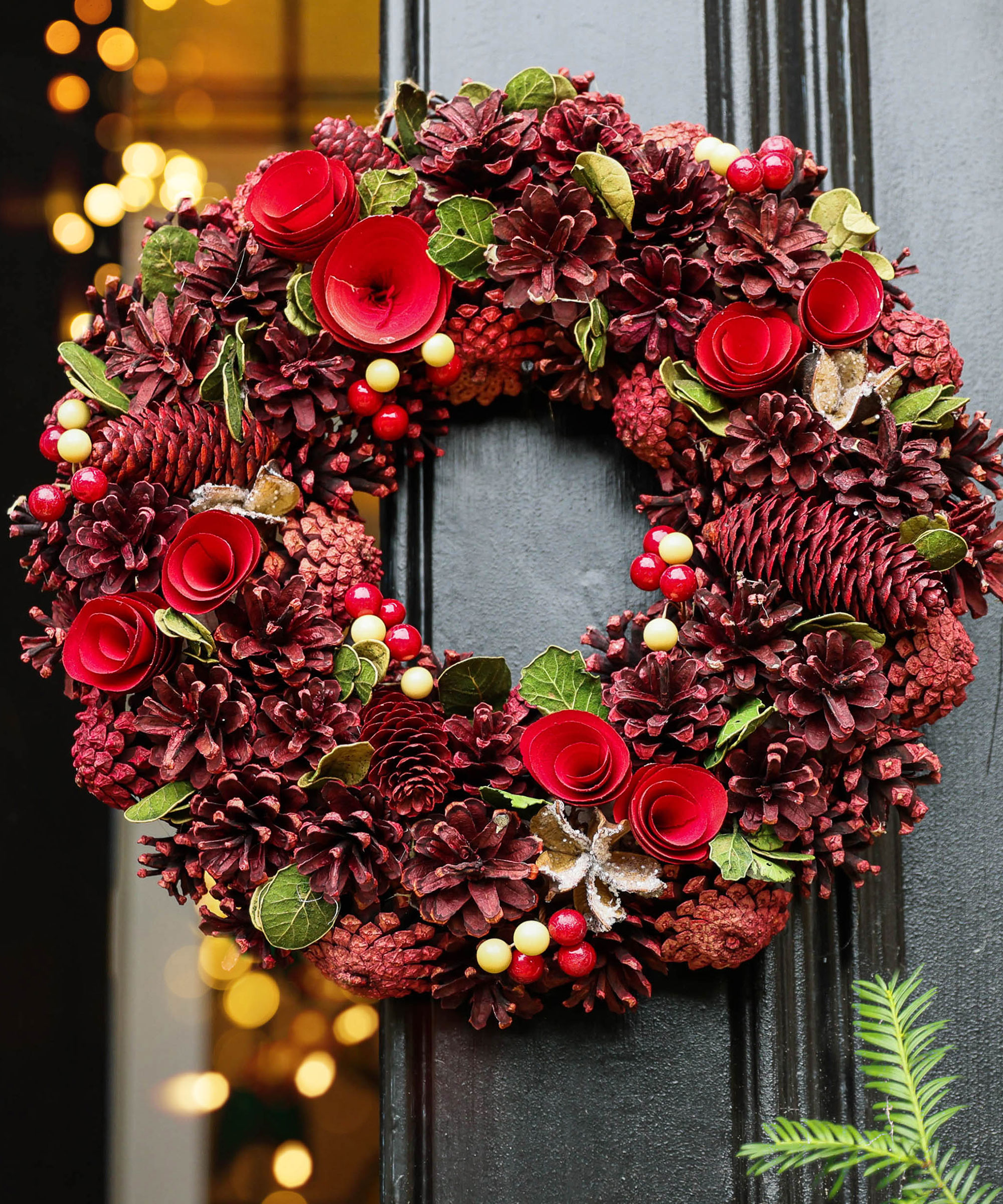
If you're a fan of more rustic decorations, a traditional pine cone wreath is the perfect option for your front door. This is a great one to try for your DIY Christmas decorations too, as the main components are easy to forage on one of your winter walks or from your own garden.
Once you've collected enough pine cones, make sure you allow them to dry out completely before you start adding them to your wreath.
To make a pine cone wreath, use a polystyrene ring as your wreath base, then simply attach the cones to the ring using hot glue, building up the design as you go. Using a mix of different size cones will make it easier to cover the base and give it a more natural look. Finish with additional foliage (real or faux) to lift the look.
4. Use succulents for a modern look
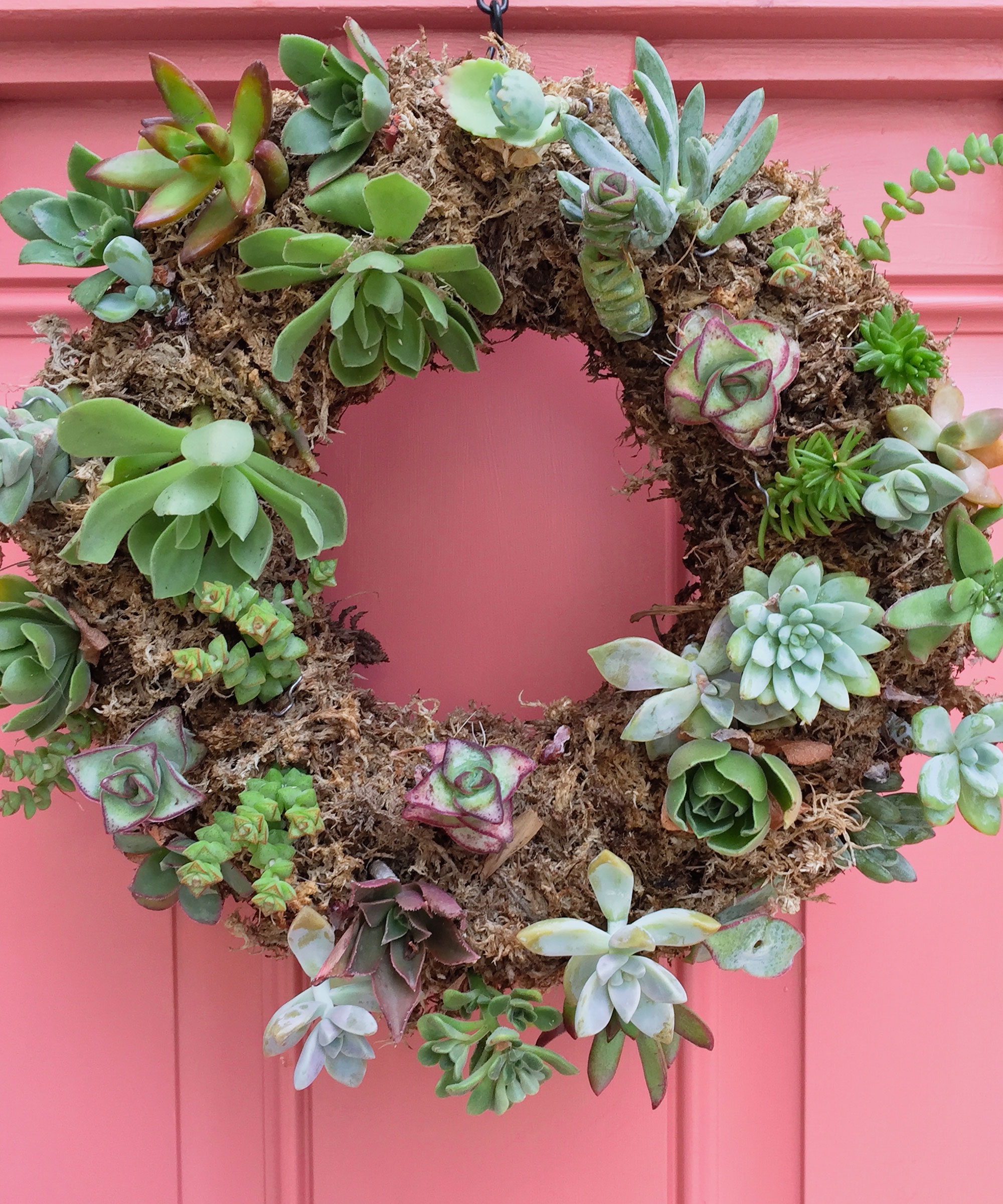
If you want to switch up your Christmas decor this year, why not learn how to make a succulent door wreath? Succulents have never been more on trend, so this is a perfect way to make your front door stand out from the crowd.
Good succulent varieties to try include sedum, sempervivum, echeveria and aeonium. If you've already got lots of succulents in your home, you can simply break off small sections from your existing plants and insert them into a moss-covered wreath base.
5. Decorate garden fences and walls
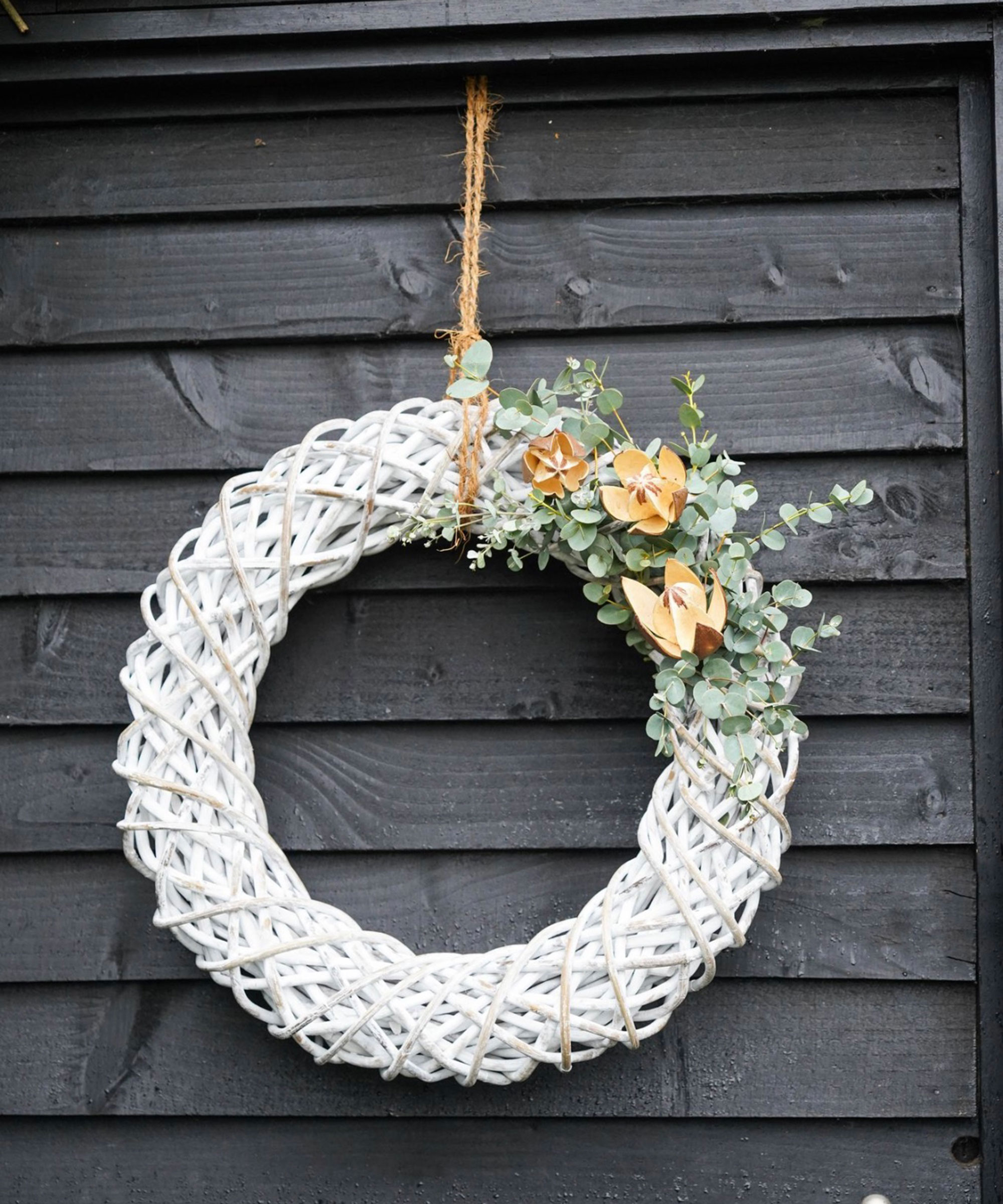
If you thought Christmas wreath ideas were just for adorning your front doors, think again. They're a stylish way to give your winter patio ideas a fabulously festive touch too, adding a decorative focal point outdoors.
A simple white rattan wreath will stand out against fences and sheds painted in on-trend black, while sprigs of fresh eucalyptus will give off a lovely scent when you brush past it.
6. Go for a classic color scheme
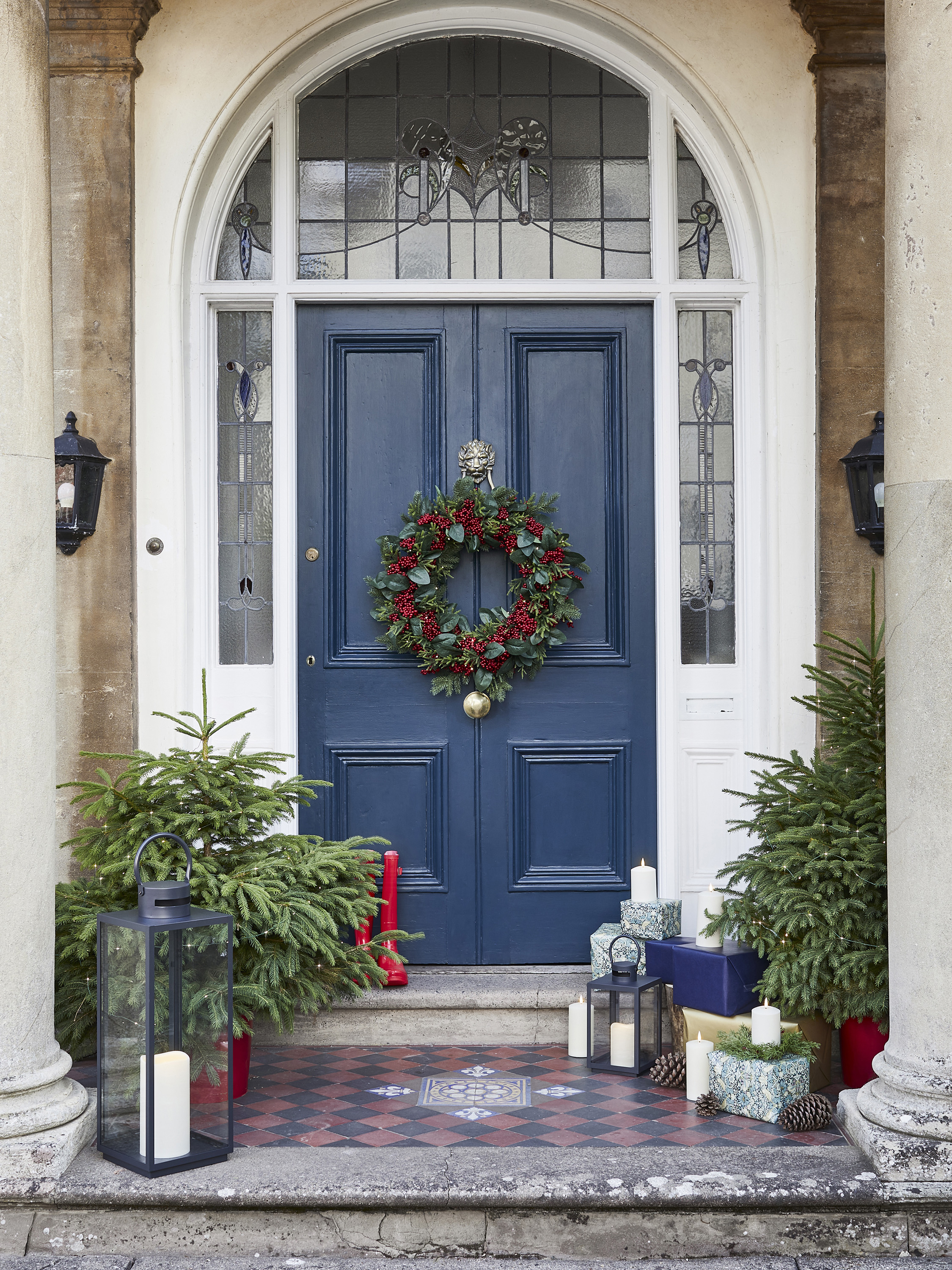
There are times when the classic red and green color scheme of Christmas is a winning choice for your front door. These rich colors work particularly well when set against the dramatic backdrop of a dark painted front door.
Whether you go for real foliage or berries, or a faux design such as the one pictured, you could even bring it indoors on Christmas Day and turn it into a centerpiece for your Christmas Day table. Place a selection of battery-operated candles in the middle of it and you'll have a stunning focal point for your festivities.
'No matter the size of your porch, there's plenty of ways to dress the space,' says Wayfair’s Resident Style Advisor, Nadia McCowan Hill. 'One of the simplest and most effective ways is the addition of a wreath, which can easily be fastened with an over door hanger or with fuss free command strips. There's so many different styles to choose from, from traditional frosted pine to more contemporary eucalyptus and this can set the scene for the overall look. '
7. Give the dried flower trend a go
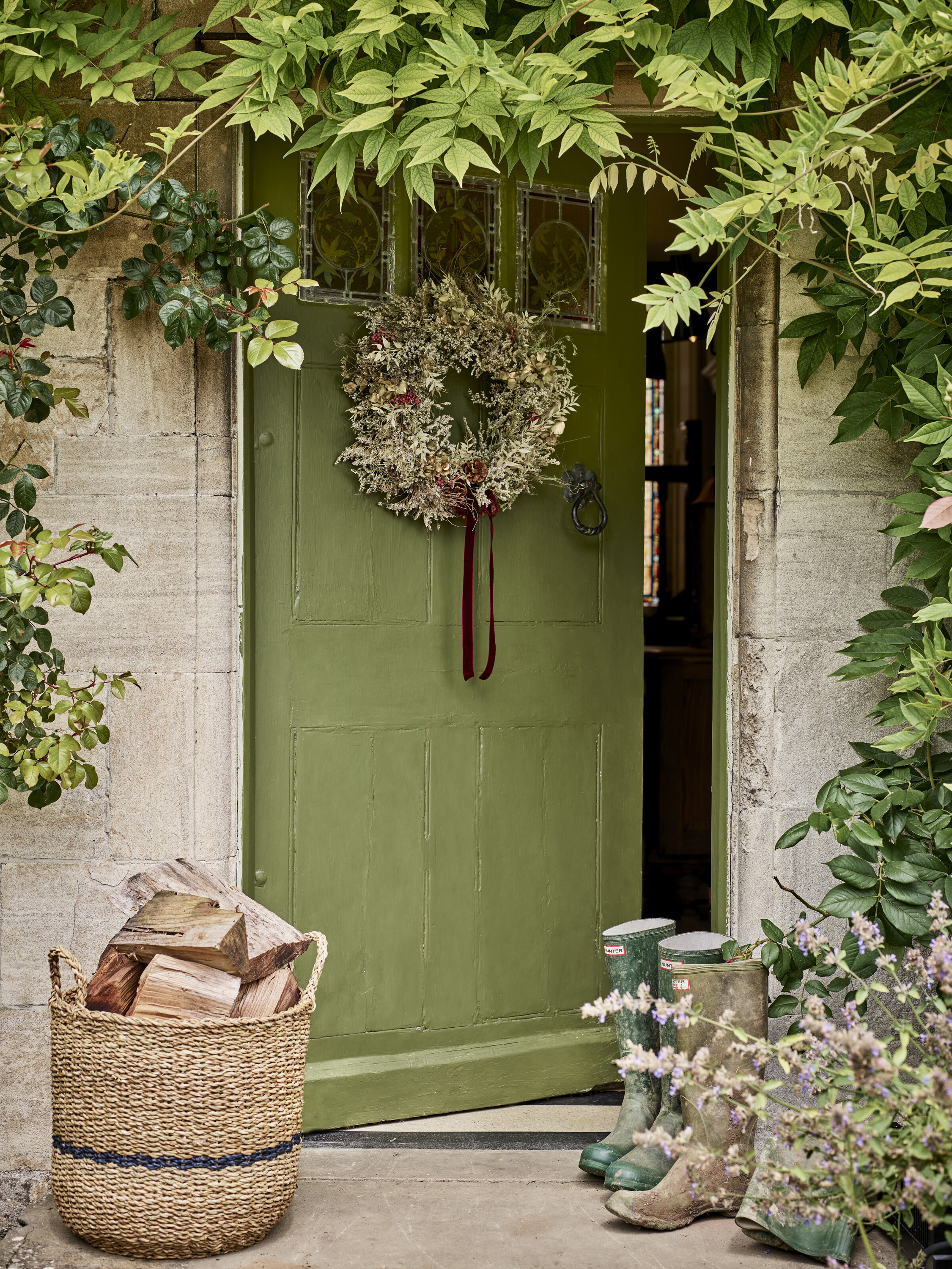
Learning how to dry flowers is a big trend right now and will continue to be going into 2022. Dried flower Christmas wreath ideas are oh-so-natural and look fabulous on front doors. The best bit? You can keep them for months afterwards too as they will still look lovely as they naturally age – just remove the festive ribbon after Christmas is over and you could leave it on the door to brighten up your home for the rest of winter.
You could even make a wreath with stems from some of your favourite plants, or foraged finds that you pick up on your walks. There's plenty of dried fern about right now, so simply add in some ivy, berries and fir and you could whip up your own in no time.
8. Go faux for a low-maintenance option
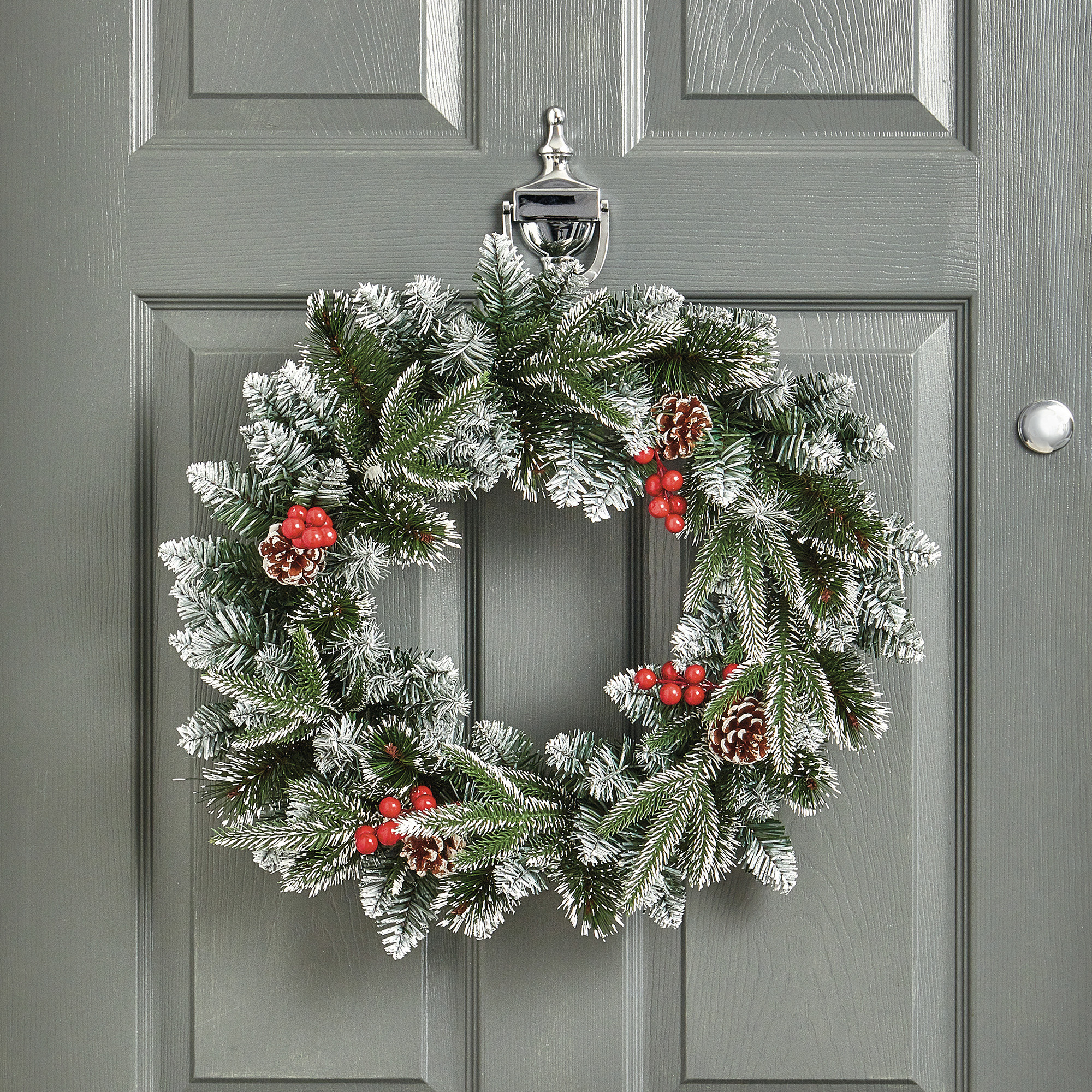
If you want to enjoy your wreath this Christmas and beyond, then opt for a faux design. The latest designs look incredibly realistic, and the best bit is you can store it away after Christmas and unpack it again the following year.
This classic design has berries and fir cones with snow effect fir, which is another top trend for this year. Add your own ribbon to it to personalize the design and make it stand out from the crowd.
9. Choose fresh foliage for a timeless scheme
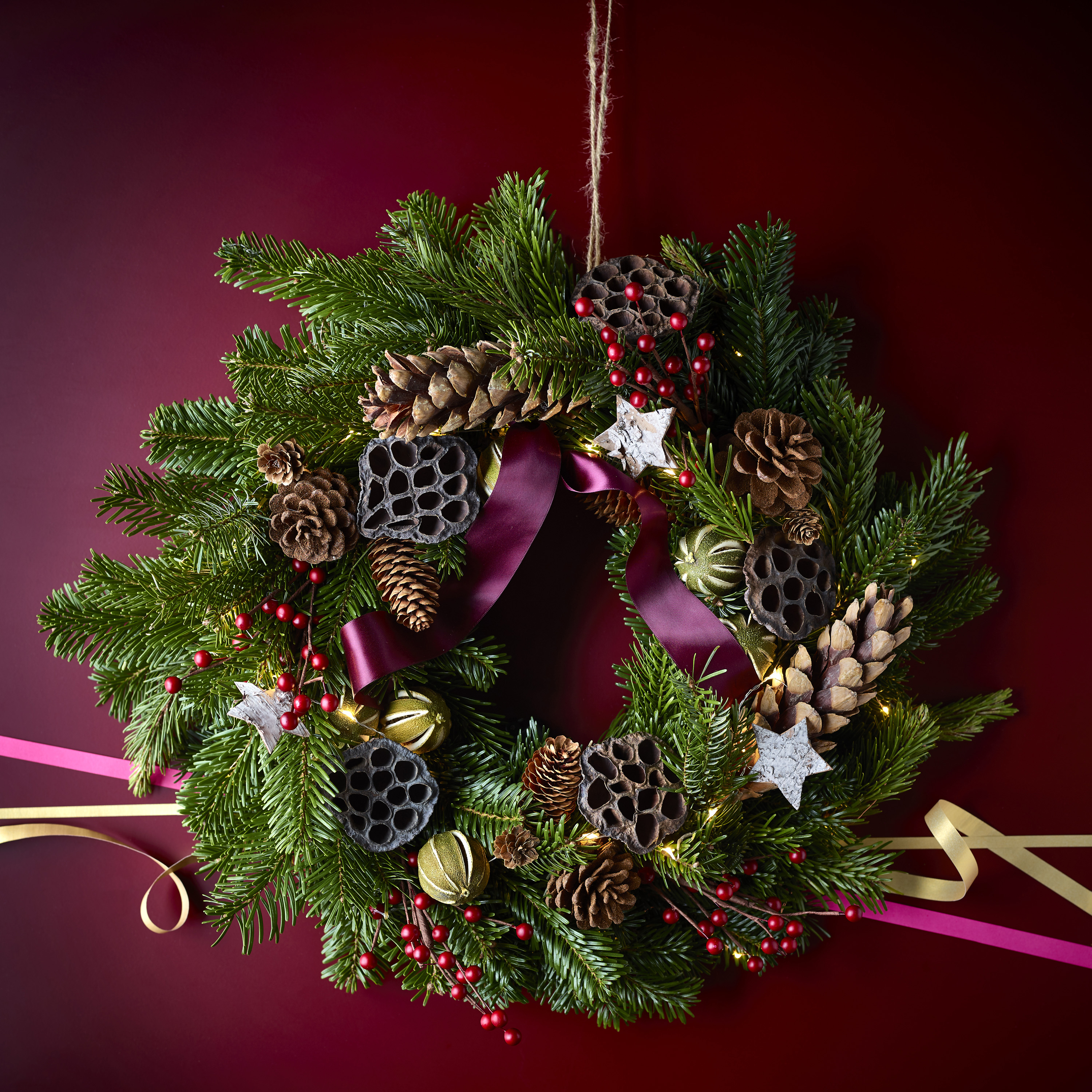
Nothing beats a fresh wreath – the scent of the spruce and eucalyptus foliage conjure up all of our Christmas memories! There are so many different designs to choose from and you’ll see berries galore in various colourways, pine cones, feathers, lotus heads and even cinnamon sticks.
If you’re after a traditional look, go for one that has dried fruit like apples, limes and oranges attached.
10. Add lights for some extra sparkle
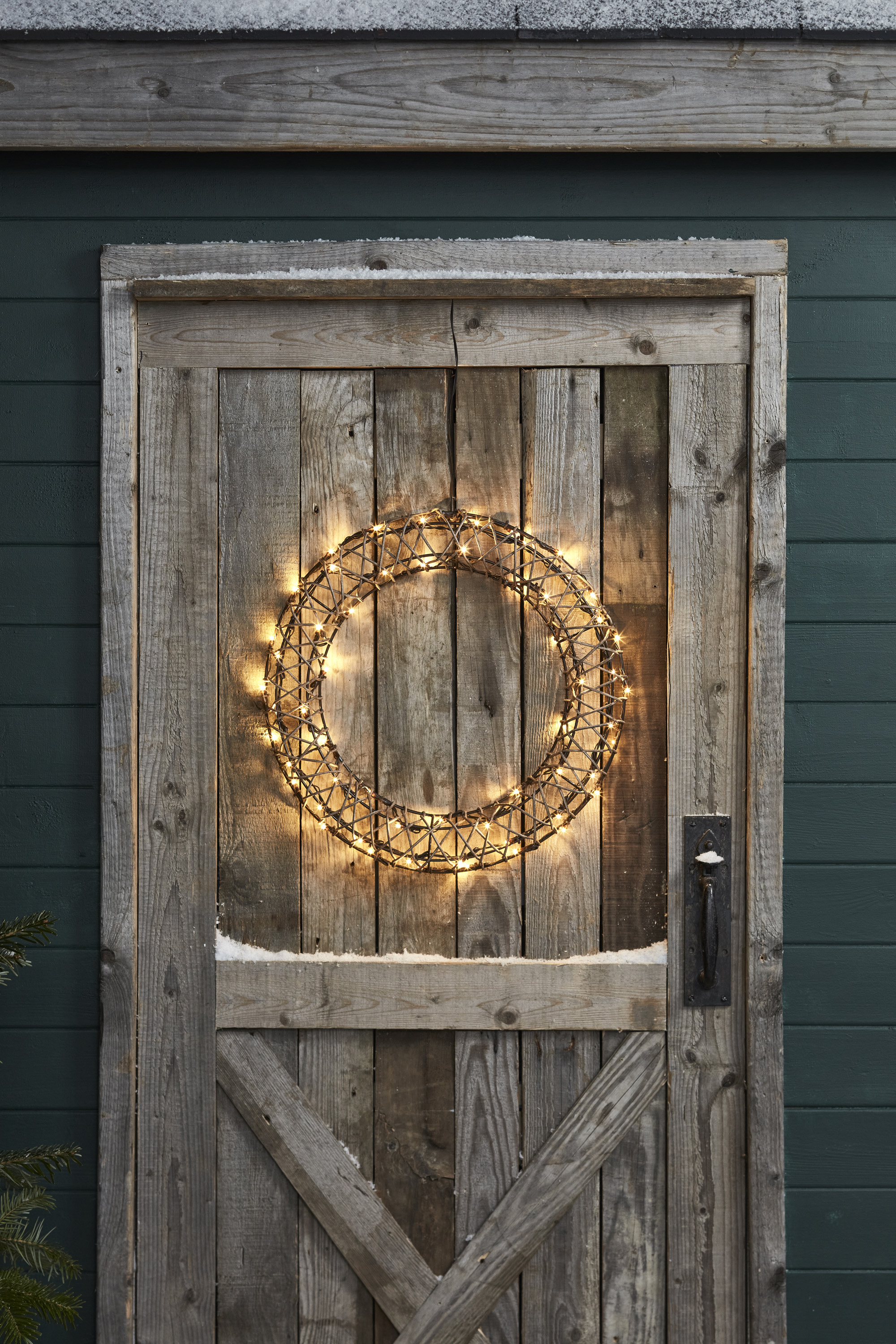
Not everyone is a fan of the classic spruce wreath with all the trimmings, but there are plenty of modern alternatives to choose from. Why not make your wreath part of your outdoor Christmas light ideas and choose a design with integrated LED lights for some added sparkle too?
A rattan design like this will work for a contemporary home, plus you could add a bold ribbon to it if you want an extra splash of colour.
11. Go for maximum scent
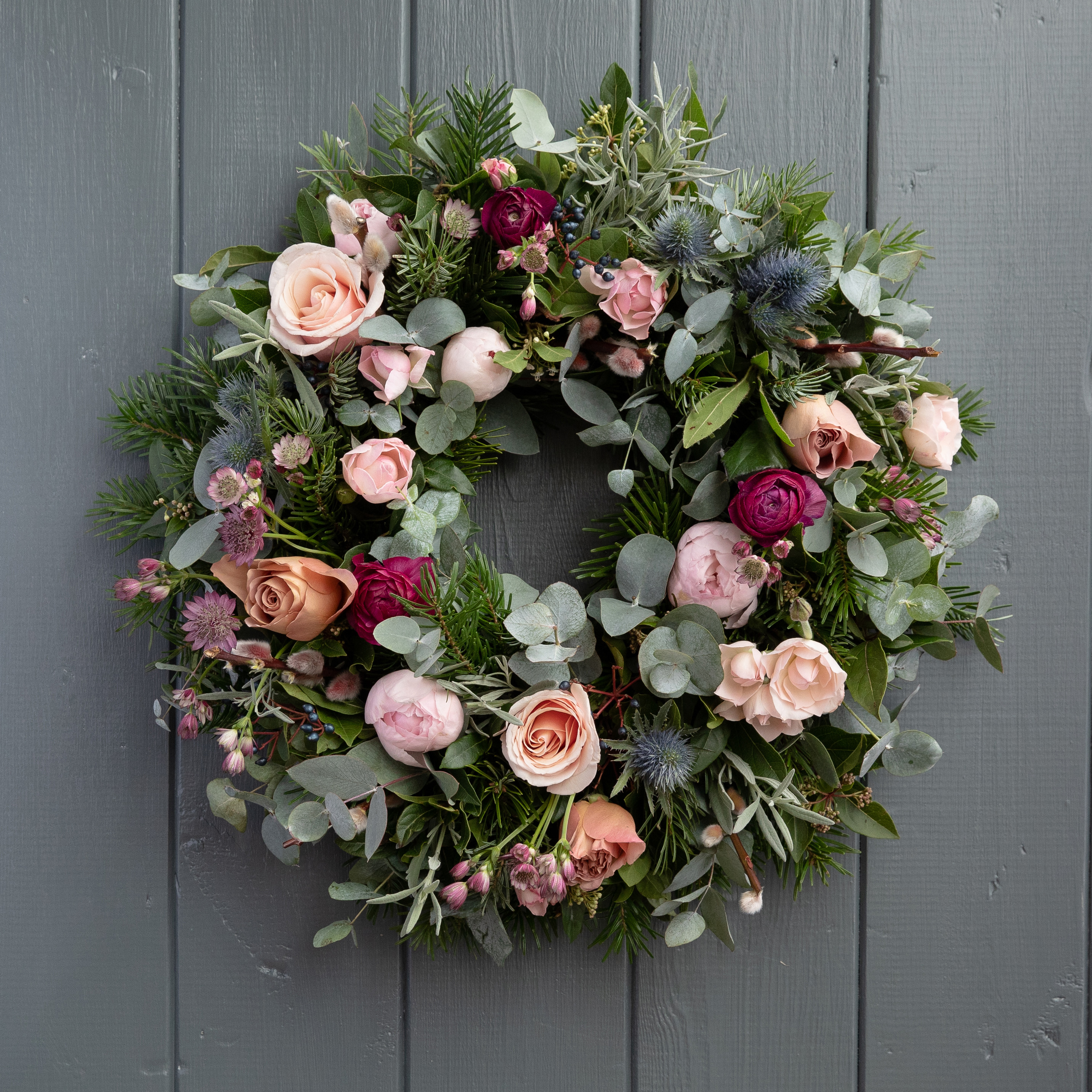
Scent is important to us all year round, but at Christmas it’s key. Aside from the usual wreath scents like spruce, dried fruit and cinnamon sticks, you can invest in one that comes with a mix of deliciously scented types of roses.
This stunning wreath features 12 highly scented roses that have a vintage color palette. It will smell stunning as your guests arrive for festivities this Christmas.
12. Keep it simple for a Scandi vibe

Want something more simple and streamlined to suit your garden decor? By choosing a metal wreath as the base of your design, you could decorate it with just the right amount of foliage to suit your chosen style.
You could of course cover the wreath base with lots of foliage for a fuller effect, but we love the simplicity of adding just a few sprigs of eucalyptus to bring it to life. With its stripped back Scandi feel, this Christmas wreath idea would look just as beautiful inside your home as it would on your front door.
What do you put in your Christmas wreath?
Instead of buying foliage, it’s better to use cuttings from your garden or indoor plants that you can add to your Christmas wreath ideas. Not only is this more eco-friendly, but it's the easiest way to give your design a more natural look. Try some of the following:
- Privet hedge cuttings work well as a filler
- Ivy
- Holly – use a variegated holly for added color
- Eucalyptus, for added scent
- Berries for festive color
- Decorative seed heads
- Sprigs of fresh herbs such as rosemary, thyme and sage
- Crab apples
- Poinsettia flowers
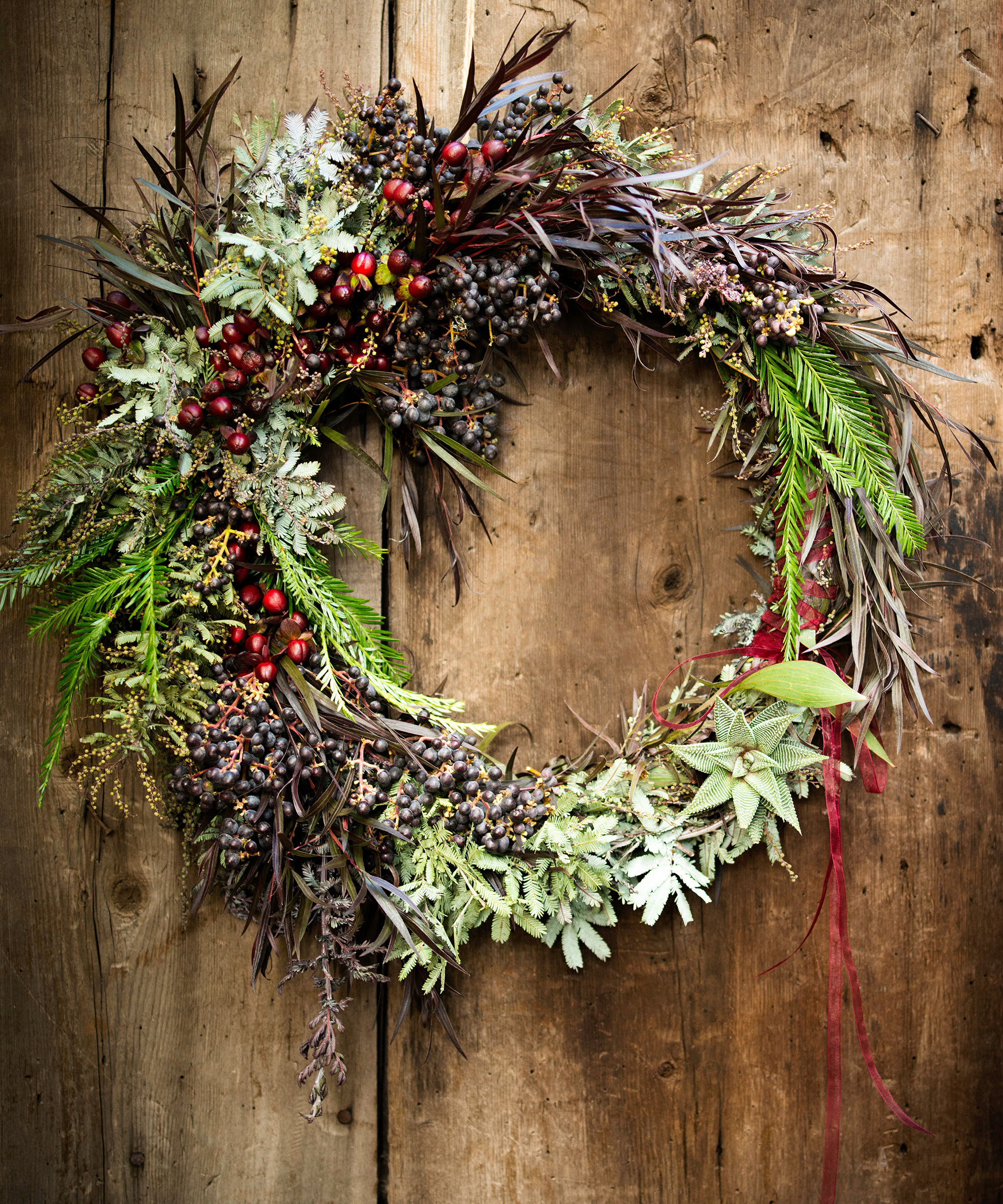
How do you make a glamorous Christmas wreath?
Adding a few unique flourishes can quickly turn even the most basic Christmas wreath ideas into something more special. Try these simple tricks to give your design a luxury look.
- Cinnamon sticks and cloves tucked in amongst the greenery will greet visitors with a gorgeous spicy festive scent.
- Add sprigs of evergreen, pine cones, clementines and nuts for a classy look. Take it further by adding the same items to your existing window box ideas for a five-minute festive makeover at the front of your home.
- If you usually go for a single wreath on your door, take this up a notch by adding a matching foliage garland around the frame.
- Don't forget about the finishing touches. A luxurious piece of decorative ribbon tied in a bow will elevate any simple design.
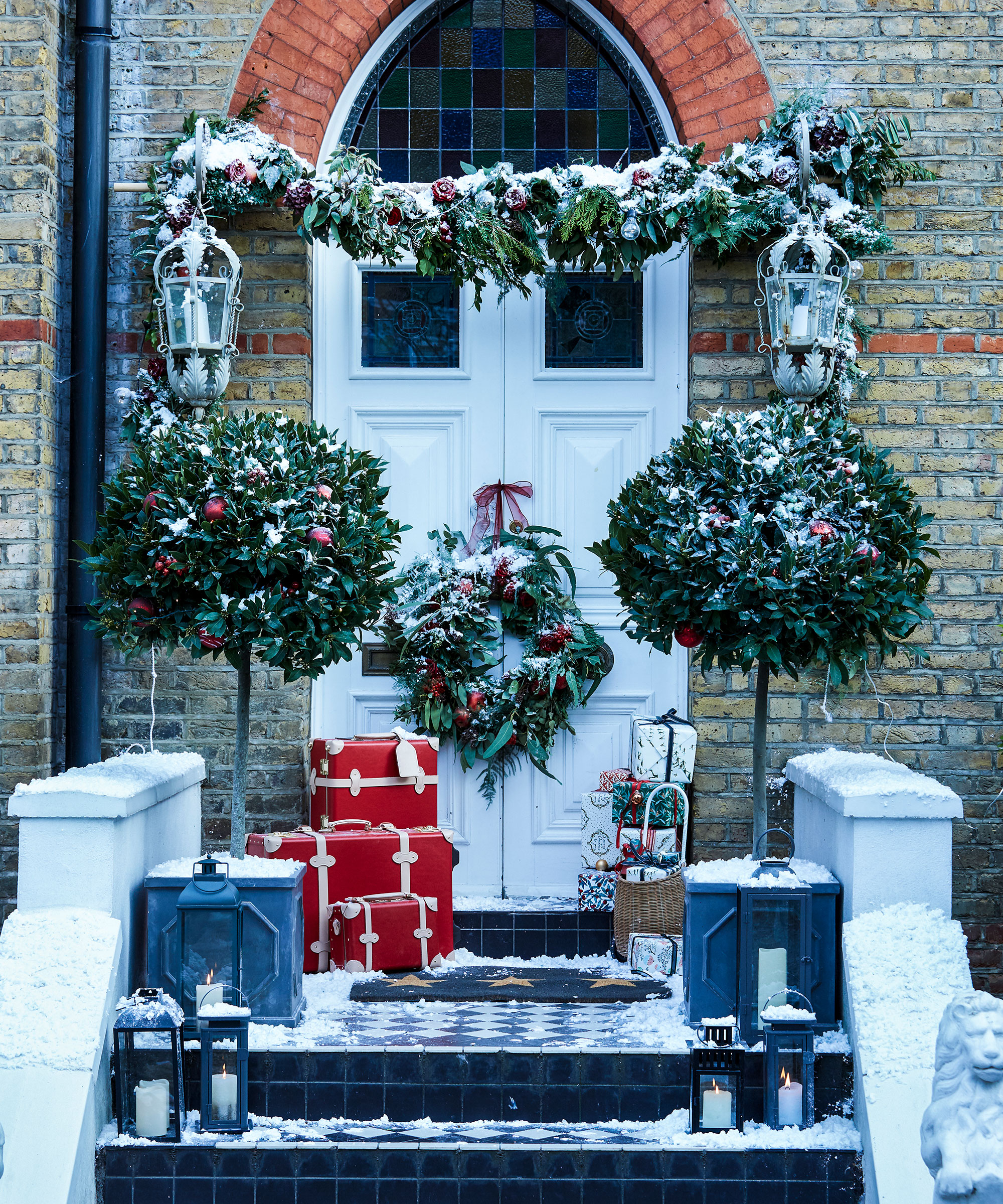
Sophie has been an interior stylist and journalist for over 20 years. She recently trained to be a florist and launched The Prettiest Posy where she curates beautiful flowers for weddings and events.



